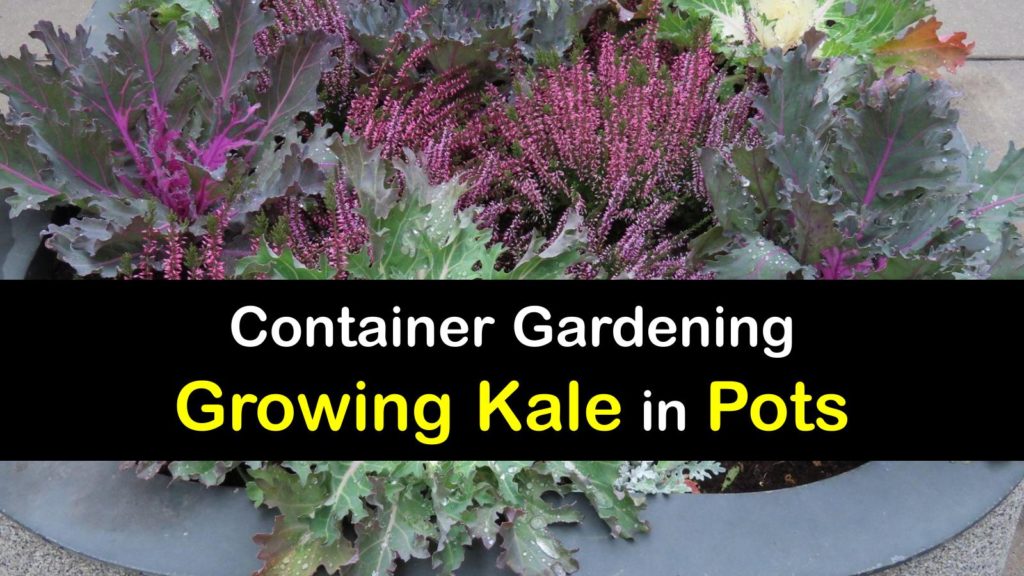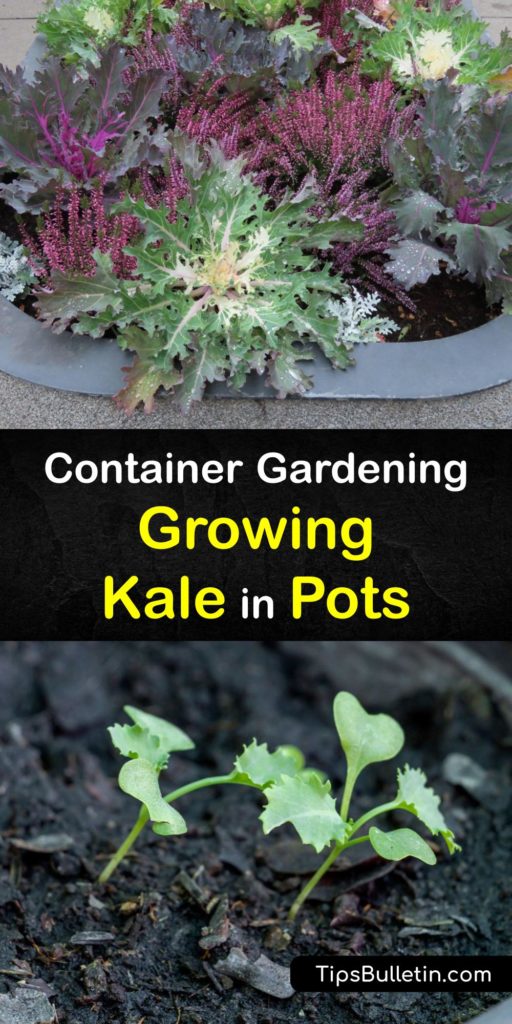We consider kale to be one of the most popular leafy greens, and its many health benefits are its claim to fame, which is why this superfood also increased in price. Growing your own at home is a great way to produce inexpensive and organic veggies. Learn the basics of this plant and how to grow kale in a pot the easy way.
Many people desire to grow a vegetable garden but are intimidated by the process. If you’re a new gardener and don’t know where to begin, kale plants are a good starting point since they are one of the most straightforward plants to grow.
They flourish in a garden setting, raised beds, and pots, making them an excellent choice for small spaces, and grow lights are not necessary. That said, there are still some things to understand before kale growing, such as the different kale varieties and the growing conditions kale seedlings and plants require for optimal growth.

Growing Kale in Pots
Planting kale in pots is a fun and simple way to produce leafy greens for making stir fries, fresh salads, and other healthy dishes. The best thing about these plants is they almost take care of themselves after you sow the seeds.
Discover the basic facts of growing kale in pots to ensure that you have patio or backyard pots overflowing with healthy and delicious kale leaves at the end of the growing season. Learn how to start kale from seed, give your plants care, and use the fresh green leaves in a recipe.

What to Know before Planting Kale in Pots
You decide to grow your own kale at home or are interested in growing iceberg lettuce in pots, but you’re unsure where to start. While sowing seeds seems pretty straightforward, there are different types of kale to plant, and they require the right conditions to grow. Here is what you need to know before planting kale in pots.
Like when you are planting cabbage in a pot, kale (Brassica oleracea) is a biennial that loves growing in full sun for at least six hours daily during cool temperatures. It is a plant grown for microgreens or leafy greens, and there are many varieties, including Blue Curled Scotch, Vates, Lacinato or Tuscan, and common curly kale.
It grows year-round in hardiness zones 7 through 9, is annual everywhere else, and thrives in rich, well-draining soil.
How to Grow Kale in a Pot
Container gardening is a great way to produce food at home, even with limited space. Find out how to start your kale from seeds and care for them while growing kale in pots. The same basic rules apply when planting collard greens in a container or other leafy green veggie.
After the last frost, fill a one-foot diameter pot with drainage holes with potting mix and sow seeds a half-inch deep and four inches apart. When sprouting kale, water the seeds right after planting and thin the seedlings to seventeen inches apart. To make your container garden interesting, consider including Swiss chard or collards with the kale.
Water your plants an inch to an inch and a half each week and fertilize them once every ten days. Container gardens dry fast, and mulch is necessary to prevent the dirt from drying out. Since they enjoy cool weather, provide them partial shade during hot weather.
If you discover aphids, cabbage worms, or flea beetles on your plants, try using the pesticide that contains Bacillus thuringiensis, a naturally occurring soil microbe, or covering your plants with a row cover. You can also kill aphids on kale with a neem oil mixture.
To harvest kale, remove the outer leaves to encourage new leaves to grow for continuous production.
How to Make a Skillet Kale Dish after Growing Kale in Pots
After growing kale in pots and harvesting kale by the bunches, it’s time to prepare them in a healthy dish. Here is a quick recipe filled with the wholesome goodness of kale leaves and the flavor of lemon and garlic.
Prepare the kale by pulling the leaves from the stem and chopping them coarsely. Pour the olive oil in a large skillet over medium heat and add the sliced garlic and red pepper flakes.
Cook while stirring for one minute and add the kale a few handfuls at a time. Add the salt and pepper, stir the ingredients, cover, and cook the greens for five minutes. Take the skillet off the heat, squeeze the juice from a small lemon over the top, and serve.
Note that you can use a substitute for kale in this recipe and many others. Collard greens and spinach are two popular choices.
Kale is a great addition to a container garden, whether you grow Dwarf Green curled kale, Dinosaur kale, or Red Russian kale. This plant provides you with a nearly continuous supply of leafy greens, and it’s simple to plant in early spring or late summer.

We hope that discovering how to grow kale in a pot the easy way keeps your patio or porch overflowing with leafy greens, and we’d love it if you’d share our kale container garden guide with your family and friends on Pinterest and Facebook.